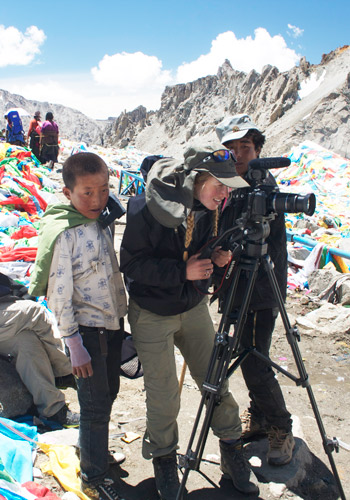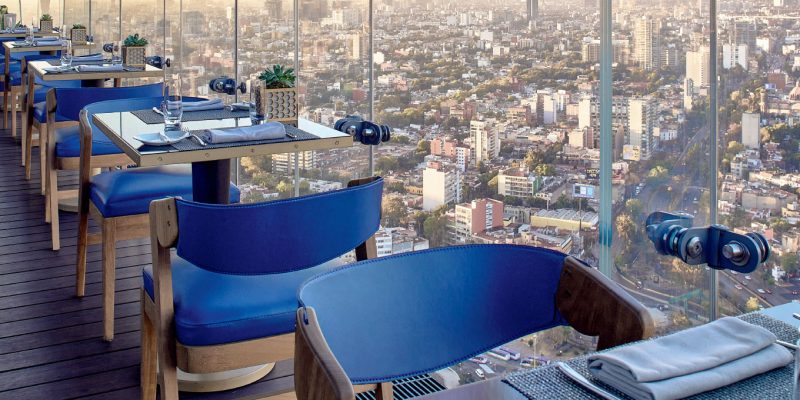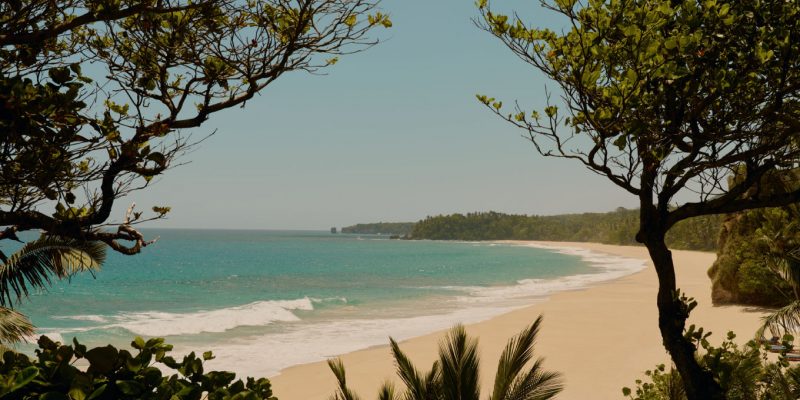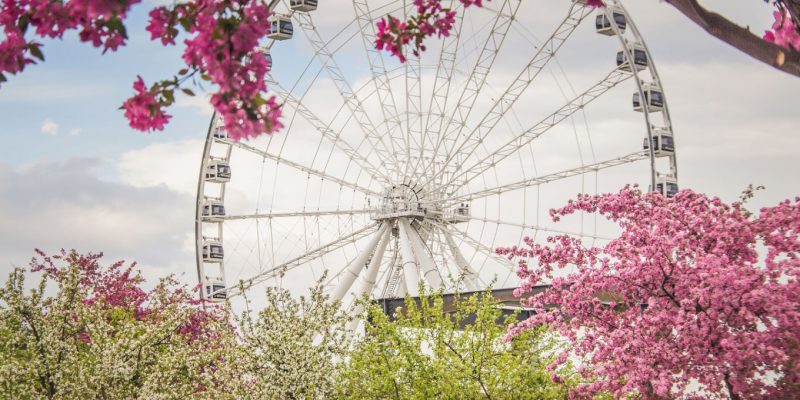Travel
Travel Memoir: The power of pilgrimage
Lara Koerner Yeo learns what pilgrimage really means at Tibet's Mount Kailash.
by : Lara Koerner Yeo- Mar 4th, 2015

Augusta Thomson, surrounded by prayer flags and fellow pilgrims, films scenes for the documentary Nine-Story Mountain at Mount Kailash’s Drolma La Pass in western Tibet.
My mother introduced me to the idea of pilgrimage when I was a child. I’ve been fascinated ever since. “Pilgrimage is a time to think through tough questions about how and why we are living our lives as we are,” she used to say. Even though she had never gone on one, she felt it was something every person should consider.
During summer weekends at Lake of Bays, Ont., we would sit on the dock and make plans to walk the Camino de Santiago, a well-trod pilgrimage across northern Spain. But when my mother died of a sudden stroke during one of those summers, just a few days before I turned 17, I tucked our travel books away.
Three years later, the summer after my first year of university, I spent a month walking hundreds of kilometres on the Camino trail with my brother and cousin. We arrived in Santiago de Compostela, the Camino’s end, on a sweltering day in August 2008. I was both elated and dissatisfied with being done. By the end of a few celebratory days in Santiago, I realized that my pilgrimage wasn’t over – that there was much more to it than just a path with a finite beginning and ending.
As a result of that trip, and in the wake of my mother’s death, I became increasingly interested in Tibetan Buddhism; its tenets of compassion, mindfulness and open-heartedness made a lot of sense to me. I felt I could either languish in bitterness and anger at how trauma had reverberated through my family or I could turn to compassion and love. I read about the practice quite extensively – as did another one of my brothers – and I participated in Buddhist communities. But, to this day, I do not think of myself as an active practitioner of Buddhism.
By 2012, I was working on my master’s in human rights and humanitarian action when a close friend, Augusta Thomson, called to ask if I would join her in filming a documentary about the pilgrimage community around Mount Kailash, a sacred peak in western Tibet, as part of her undergraduate dissertation in social anthropology. The opportunity seemed like a gift – one that would awaken me from the monotony of the classroom and, I hoped, deepen my understanding of pilgrimage.
On July 12, I arrived in Darchen, the settlement at the base of Mount Kailash, with Augusta, who would direct the film; Don Nelson, a fellow researcher and our primary videographer; and a small Tibetan crew. The mountain is deeply venerated by Hindus, Jains, Bons and Buddhists; it is considered the centre of their cosmological universe and known as the “jewel of the snow” and “the navel of the world.” Each year, thousands of pilgrims make the 52-kilometre circumambulation, or kora, as it’s known in Tibetan, around the 6,638-metre peak – which has never been summited because of its spiritual significance.
We encountered three types of pilgrims at Mount Kailash: permanent locals who live and work in Darchen, who complete the kora sometimes but primarily remain in town; groups of permanent and semi-permanent nomadic Tibetan Buddhists and Bons who come to the mountain from nearby villages during the mild seasons for a couple of weeks and walk or prostrate along the route on a daily basis, waking at 3 a.m. to complete one kora by late afternoon; and other visitors, often foreigners, who tend to complete only one kora in two to three days. Our group ended up slowly circumambulating three times in 12 days so we could do interviews and film along the way.
READ MORE: An insider’s guide to Dubai
We started our first kora on a sunny afternoon. From Darchen, we set out across the expansive dry plateau below Kailash’s snow-capped dome. Walking clockwise, the direction that Buddhists and most other faiths take (only Bons walk counter-clockwise), we soon encountered heaps of colourful prayer flags and ceremonial scarves, or katas. We’d reached the first of four prostration points, called chakstal gangs, along the Buddhist route. At these locations, pilgrims stop, bring their hands to their chest in prayer, raise them to their forehead and then bow down to the ground and touch their hands and forehead on the path in front of them. The majority of pilgrims prostrate only at specific sites along their path, but some do so at every step – making for an intensely arduous, slow- going journey.
Unlike the jubilant group of Bon pilgrims we met at this first chakstal gang, we didn’t prostrate. Instead, we smiled and raised our hands in greeting. We could feel their excitement as they finished their journey for the day, and I’m sure they could sense our first-day enthusiasm. Next, we continued into the Lha Chu valley, passing the Chuku monastery, tea huts, nomad camps, the sacred Tarboche flagpole and the second chakstal gang. Just before we reached the Driraphuk monastery, where pilgrims who complete the kora in two days generally camp, we met a family of Buddhist pilgrims from central Tibet – an elder matriarch, her children and one grandchild – who were prostrating every step of the route.
The dust that engulfed the matriarch couldn’t distract my attention from her shock of dark hair, her bright, penetrating eyes and her deeply sincere voice. She took a break to speak with us through our team’s Tibetan translator as her family slowly moved forward. She seemed completely exhausted by the physical exertion of her devotion, yet she praised the mountain and its powerful grace. (The foreheads of her children, like hers, were caked with a thick layer of dirt from their prostration bows – some even had broken skin and small patches of dried blood.)
She explained how her family had spent months preparing for this journey, how they all made their own prostration gear – they’d sewn rubber pads for their knees, lower arms and palms and cloth aprons for their torsos. “We hope to complete the kora in two weeks,” she explained hopefully. I was deeply touched to be in her presence and watch her family perform their devotions. I had never witnessed anything like it before, and it gave me a new perspective on my comparatively easy journey.
READ MORE: Experience the unexpected Zen of a “staycation”
The next major site was the kora’s traditional burial site, called Siwashtal. Here, most pilgrims leave prayer flags and katas alongside bundles containing clothing and belongings of their deceased relatives (which often include bits of the deceased’s hair and teeth). The enormous mass of stuff overtakes the trail – it’s an astonishing contrast to the otherwise desolate landscape along the path between sacred sites.
At first, I felt some foreboding as we approached the site. During one of our circumambulations, we watched some pilgrims enact a ritualistic death: They lay on a slab of rock and gently rolled on their backs with their palms open toward the sky. It seemed so startling. I never contributed anything to the pile or enacted my own death, but today, I think of such things as gifts and signs of respect for the mountain, for pilgrims’ own spiritual selves and for their ancestors.
The apex of the pilgrimage is Drolma La Pass, which is about halfway around the route. At 5,636 metres, it’s the highest point and considered by many to be the kora’s most sacred site. It’s where one is symbolically reborn. The path up is the steepest part of the ascent, and I certainly felt the effects – I had terrible headaches from the altitude. With every heavy step, I would focus on my exhaling breath and the family mantra my father used when, as a teen, I first started hiking: “Just put one foot in front of the other.”
As I approached the pass, I thought of the prostrating Buddhist matriarch and her family and how difficult it would be for them to reach this point. Despite the exertion, every pilgrim we met on Drolma La Pass was overcome with emotion and full of greetings – and I imagined it would be the same for the matriarch and her family. It felt natural here for me to bring my hands together in prayer and recite mantras to the mountain.
At this high point, our team joined in the practice of leaving prayer flags on the pass. We chose to write the names of family and friends on individual prayer flags we’d carried with us. Then we strung them up to fly in the wind and act as a form of blessing. I took a photo of each of our flags and reflected, in that moment, on every name. When I came to my mom’s name, I knew she was there, somewhere, approving of our journey.
READ MORE: Going beyond the Mayan ruins in Guatemala
In time, our little documentary team became a part of the collective pilgrim community. We interviewed devout Hindus in tour groups or with their gurus, a German man exposing his grandsons to mountain travel for the first time, a young Chinese pilgrim who quit his job to travel the country and who found Buddhism at Kailash, and a couple of jovial Bon men whom we encountered on the path three times. Everyone seemed centred on the common themes of reverence for the spiritual power of the mountain and openness toward their fellow pilgrims.
I think Rolf van Buren, the German grandfather, characterized this best when he spoke to us of how, if you take the time to smile, raise your hands in greeting and say “chin lab che” (a Tibetan pilgrimage blessing) to passing pilgrims, you are always met with tremendous warmth. Although I never learned the exact translation, this is the sentiment. We were seeing first-hand how these small gestures – a smile, an extended hand, eye contact – are the pilgrims’ communal language and the foundation of this unique community. It was a joy to partake in these practices day after day.
One night, while we were camping near Drolma La Pass, I set out to hike up to a glacier to have some time alone to reflect. Partway though a river crossing, I stopped on a rock to rethink how I could safely reach the other side. Before I could figure it out, a young nomad walked swiftly through the water toward me with a smile and open arms. I lunged toward him and he caught me in his embrace – I felt incredibly safe in the arms of this stranger. We raised our hands in prayer, bowed to each other and walked our separate ways. No words were exchanged.
During another circumambulation, Augusta and I witnessed a rare exchange between prostrating pilgrims – it’s a scene that made it into our documentary. As we walked back to camp after filming at the fourth chakstal gang, we encountered a Buddhist and a Bon prostrating toward each other. Traditionally, followers of Tibetan Buddhism and the Bon faith are rivals; they believe that ritualistic duels were fought between the religions’ principle deities for control of the mountain. Knowing this as we looked at the narrow path, Augusta and I weren’t sure what would happen.
But right before the pilgrims would have collided, the Bon man halved his prostration to give the elderly Buddhist space to complete his bow. Both pilgrims then sat together on a large rock overlooking the path, talking and chuckling; they were two men, strangers, from oppositional faiths, brought together through humility and a shared practice.
READ MORE: Travel Guide: From Hong Kong to Shanghai
I felt humbled to witness the scene. In fact, I often felt incredibly humbled by the kind demeanour of strangers on the kora. On the Camino, pilgrims were friendly and I felt very much a part of a community during my walk. But, comparing the experiences, I think my ability to casually speak with many other pilgrims in Spain diluted the power and importance of physical gestures that acknowledge and show respect for one another. On the kora, because the language barrier often prevented my group from speaking directly with fellow pilgrims, every gesture resonated.
Today, I’m studying law at the University of Toronto and working on projects related to women’s and indigenous rights. In contrast to my time walking the kora, life is busy and hectic. People are abrupt with one another and often distracted by the minutiae of deadlines and todo lists. It’s not an environment where people appear to notice or understand the power of eye contact or a smile – gestures that come so naturally to pilgrims at Mount Kailash.
In the two years since I completed the kora, I’ve started a new tradition – a symbolic gesture of my own. I leave prayer flags wherever I happen to be each July. In 2013, I did so along the Dalai Lama temple circumambulation in Dharamsala, India; and this past July, I strung up flags on an Ovoo, a sacred cairn for offerings, in Mongolia’s Gobi Desert. I do this because soon after I left Tibet, I learned that one of my cousins had been murdered just a few days after I had flown a flag for her on Kailash. In remembrance of her, and my mother, among others, I will do this every year.
Now, when I’m caught up in the tedium of school and feel like I’m losing perspective, I turn to the stories in our documentary, Nine-Story Mountain, which Augusta released last year. I also think of my mother and her own small but significant act of teaching me about the power of pilgrimage – how on those lazy summer days, we would talk about what it might mean to treat every day as a pilgrimage. I trust in this as I put one foot in front of the other each day.
THE MEANING OF PILGRIMAGE
Pilgrimage has been a central tenet of myriad faiths for millenniums; many religions consider it an obligatory practice at some point in life. The most well known is the Muslim pilgrimage to Mecca, which attracts millions of believers a year. While pilgrim ages are broadly recognized as having a beginning and an end, they can also be understood as a cyclical route with no defined start or finish. Some are as short as a few minutes – in Tibet, these are commonly done every day – or they can take several months.
READ MORE:
Travel Memoir: 22 hours in Cairo
Staying at one of Ireland’s most luxurious manors
Going beyond the Mayan ruins in Guatemala
Newsletter
Join our mailing list for the latest and biggest in fashion trends, beauty, culture and celebrity.
Read Next

Fashion
Cartier Celebrates 100 Years of the Trinity Ring
What better way to celebrate an anniversary than with a new collection?
by : Allie Turner- Apr 19th, 2024

Culture
How to Spend 48 Hours in Mexico City
Where to discover the hidden gems—markets, mezcal, modern art—of the Central American capital.
by : Jennifer Nguyen- Apr 18th, 2024

Culture
Discover Club Med’s Stunning Exclusive Collection
Vacation destinations that bring pure luxury and comfort.
by : ELLE Canada- Apr 8th, 2024




